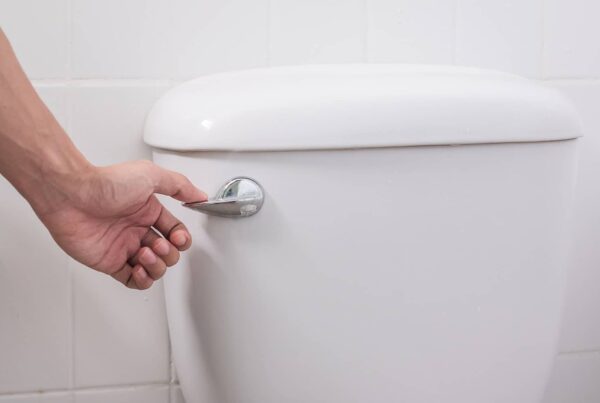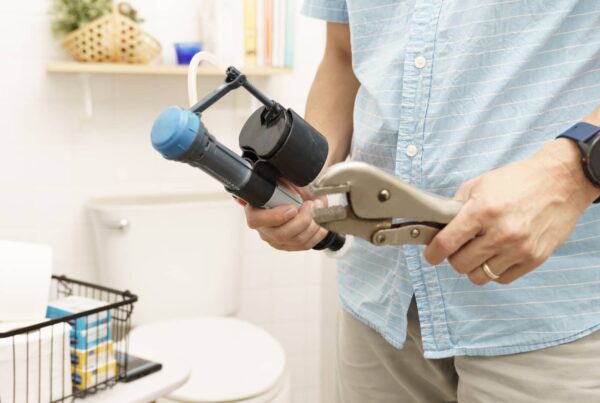
Owning a home requires a lot of maintenance and knowledge to do so. Before purchasing a home, you should also get as much information as you can about the history of the home and the building materials that were used to construct the home. Keep in mind that what was once used to build a home might not be a good material to use today. For example, when it comes to pipes in your plumbing system, there can be copper, PVC plastic, or even lead pipes used. Depending on when the home was built you might have lead pipes. What do lead pipes look like? Lead is a soft and shiny metal that is not magnetic. If the service line is dark gray, it is a lead pipe.
Let’s take a look below at how we can determine if we have lead pipes in our home.
What Might Contribute To Lead In My Water Pipes?
Historically, there are a couple of ways that lead can get into your water. Exposure to lead is not healthy by any means. According to the Centers for Disease Control, even a small trace of lead in the water source could lead to reduced academic achievement and attention control. Let’s take a look below at where lead could enter our water source.
- It could come from the solder that is in your plumbing.
- The service line connecting your home and the main water line is lead piping.
- Brass faucets or valves in the plumbing system are older and outdated.

How Can I Check My Pipes?
If you want to know if your pipes are lead, there are a couple of ways that you can check your plumbing system. Knowing if your drinking water is coming from your service line through lead pipes is very important. Check the lowest point of the home that is nearest the road or in your basement (if you have one) to see if the pipe is lead. Let’s take a look below at some tricks to determine what kind of metal pipe you have in your plumbing.
- Check the service line to determine if the pipe is a dark matte gray color. If it is, it is likely a lead service line.
- Take a screwdriver and scratch the surface of the pipe. The metal will become shiny and silver, and appear soft if it is lead.
- A copper color or browning service line pipe typically indicates a copper supply line.
- Steel is magnetic, so if the service line is a galvanized steel service line, it will have magnetic capabilities. Use a magnet stick to see if it will lock to the pipe. Also, you might find PVC plastic pipes as your service line.
The only way to be sure if you do not have any lead pipe water lines is to call the local city offices to get the municipal records regarding what was used to build your home and connect the plumbing system to the city water source. Additionally, you can get your water tested by a professional for any lead exposure.

How Old Is Your Home?
Understanding how old your home is can lead to many answers regarding the type of pipes that you have connecting your water lines to the city service line. Let’s take a look at some home ages that will tell us the likelihood of lead pipes as our water service line.
- Post 1986 lead-Free solder plumbing was mandated to be used in any new construction. Solder is what connects all of the plumbing pipes in your home.
- Before 1986 you may have lead solder. Scrape the solder to see if it is shiny and lead.
- Check for updates on the plumbing. It is possible that copper pipes were installed as a swap out from lead pipes. However, the solder might have been used to connect the copper joints. If that occurred then lead could still be in your water source. Solder is typically 50% lead and 50% tin.
Just remember that if you have an older home it is highly likely that you will need to upgrade your various home systems. Plumbing is not unique to needing an update. Materials change and get better from year to year. So, make sure that you are educating yourself on how to avoid plumbing problems in older homes.
Other Recommended Maintenance
Now that you know about lead pipes, let’s take a look at a few areas of maintenance. One of those is brown toilet water. This can be due to leftover waste, rusty pipes, minerals, or rusty toilets to name a few.
Another area is cloudy tap water. This can be due to bubbles, hard water, and a well or sediment filter to name a few.
Lastly, when you use the faucets in your home, you may notice there is water flowing slowly out of the faucets. This can be fixed by cleaning your pipes and the P-traps connected to the drains, so you need to clean sediment from the water lines. This is done by flushing cold water back into hot water pipes.
When Do I Call A Professional?
When you purchase a home, make sure that during the home inspection, your plumbing system checks all of the health and safety boxes. As stated above, you want to follow up with your city records to determine what materials were used to build the house. After you have collected all of the information, hire a local master plumber to come in and test your pipes.
Conclusion
Anytime you are dealing with plumbing issues things could get frustrating. Make sure that you reach out to your local home inspection team to get your entire plumbing system inspected. They can ensure that the system is updated and working properly. Also, they can recommend a reputable master plumber to come in and review your plumbing needs to keep you safe and healthy. Call Waypoint Property Inspection to inspect your home in Tampa, St. Petersburg, Lakeland, Orlando, Palm Beach, Ft. Lauderdale, and surrounding areas.



